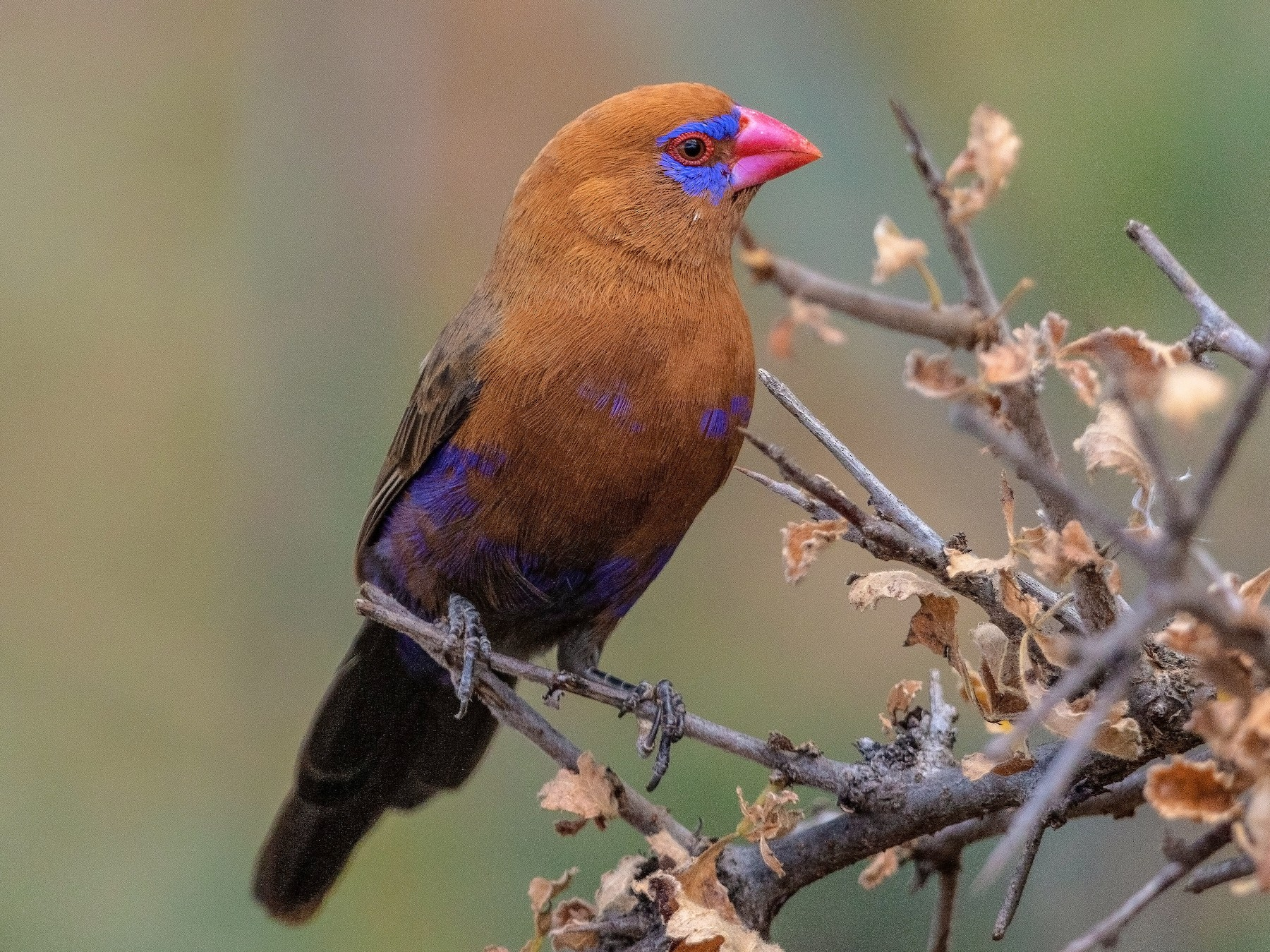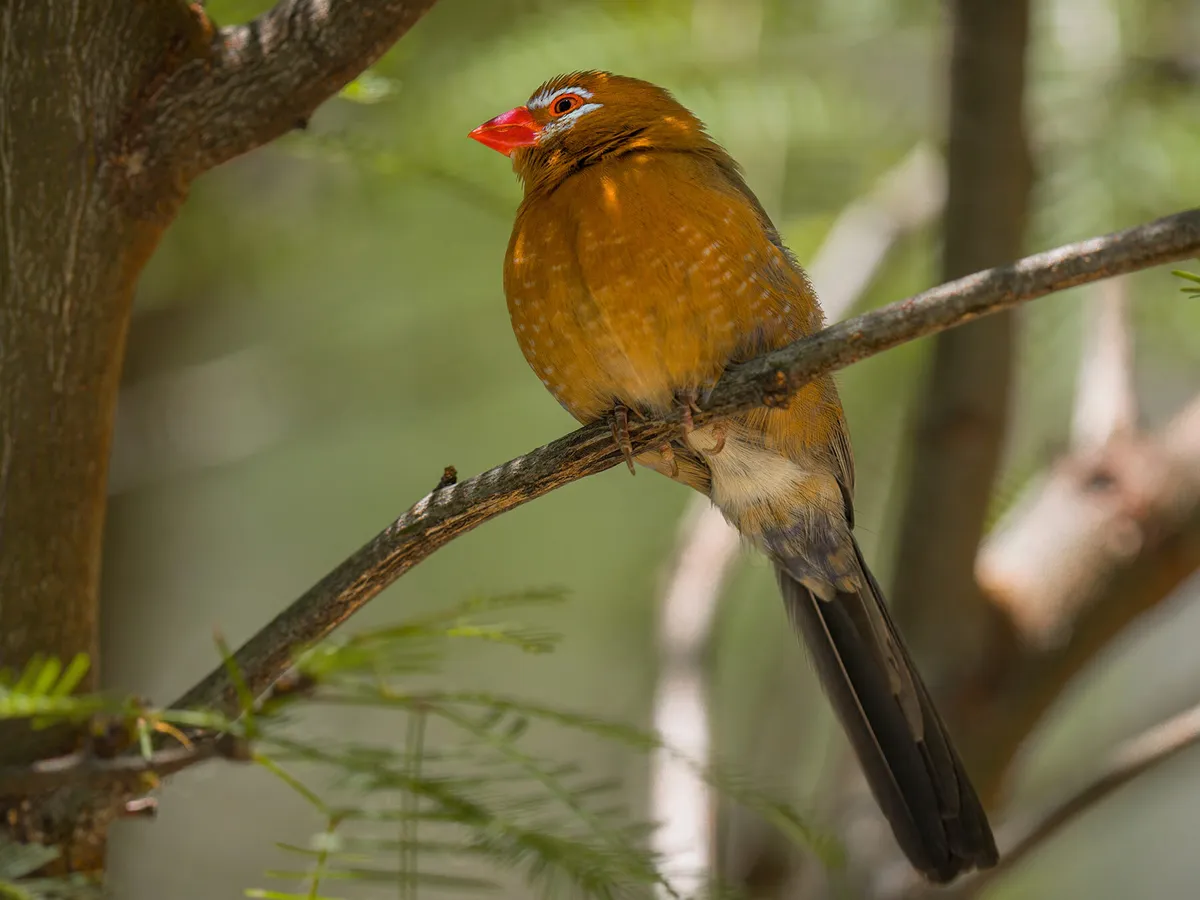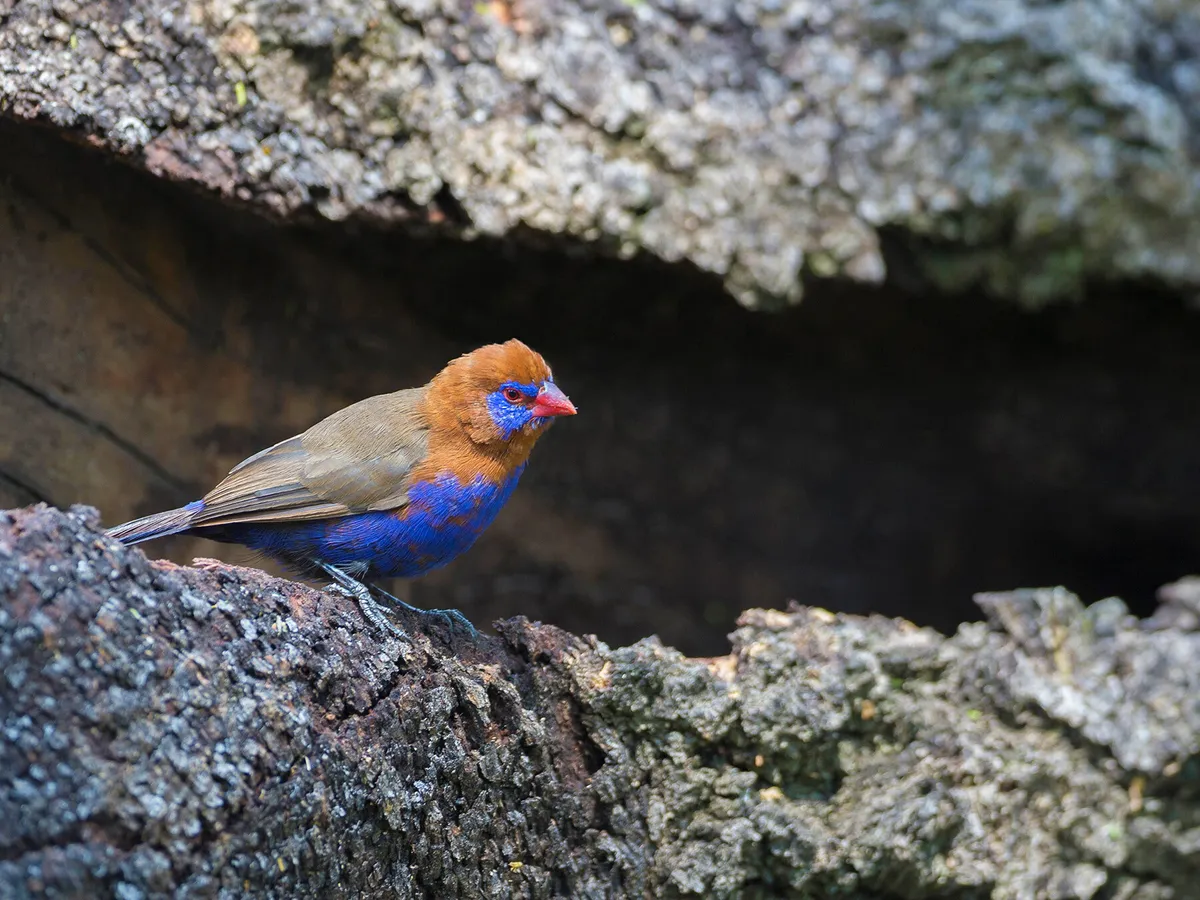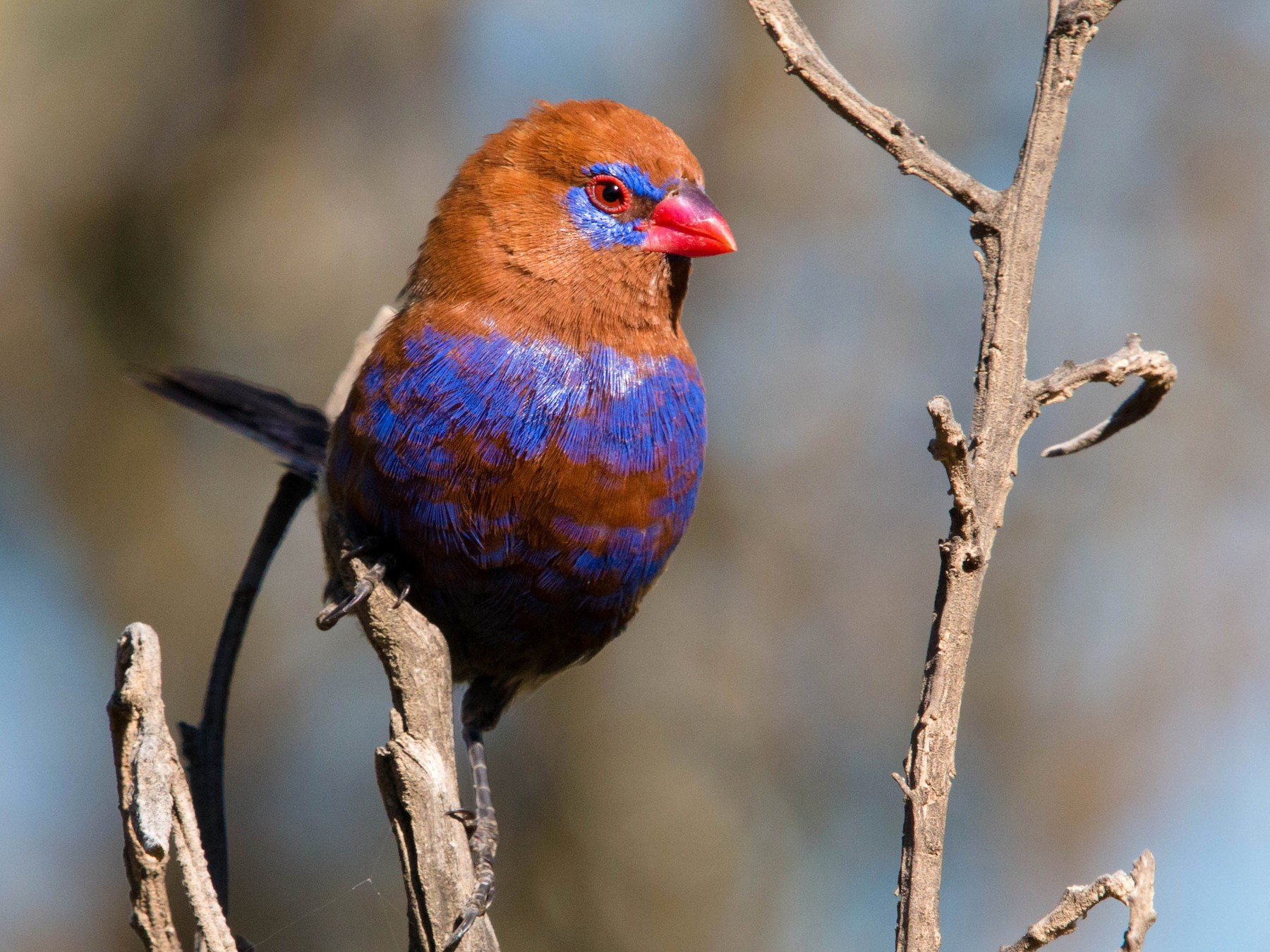
Males are particularly striking with a vibrant purple colour on their breast, bellies and under-tail coverts, along with patches of chestnut-brown. Females, on the other hand, have a less vibrant appearance, with light brown underparts and mostly brown upper parts.

Juvenile birds resemble females in appearance but without the face patch and chest spots. They usually reach full adult plumage between 4 and 6 months of age. Both males and females produce a high pitched ‘chit-cheet tsereea-ee-ee tsit-tsit’ song, with slight variations in different regions.

The Purple Grenadiers have a relatively simple diet that mainly consists of grᴀss seeds, termites and small spiders, and prefer to feed on the ground. They are commonly found in arid habitats with acacia thickets, thorn scrub and open bushy areas.

Breeding season for the Purple Grenadiers varies by location, typically occurring during the rainy season. During courtship, males will hold a grᴀss stem or feather in their beaks and bob up and down near a female, stretching their necks and bowing their heads. Nests are built by both males and females and are constructed from fine grᴀss with a feather lining. Pairs can lay up to three clutches of 3-5 white eggs per year.

While these birds are fairly common throughout their range, they are known for their secretive behaviour and are often found foraging in pairs or small groups. However, they can be noisy during the breeding season, with frequent calls and songs. Male birds become particularly aggressive during breeding season and are very territorial.

The Purple Grenadiers are a stunning dimorphic species with unique features and behaviours. Their distinctive plumage, simple diet and breeding behaviours make them a fascinating bird species to observe and study.





